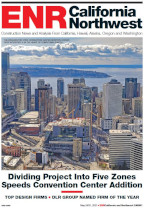...project. The multibillion-dollar link to Sicily was revived by Italy’s Prime Minister Silvio Berlusconi after being dropped by the previous administration. Impregilo CEO Alberto Rubegni hopes the estimated 72-month project will start next year.
Civil engineering “is less impacted than building, and we are seeing the stimulus packages, especially in the U.S., have started to kick in,” says Johan Karlström, CEO of Sweden’s Skanska AB. “A lot of states have decided to support the economy by launching significant infrastructure projects,” adds Cote.
Arafa of Al-Arrab agrees. He says large, government-financed infrastructure projects have kept the construction industry in many countries afloat. “The public sector, in return, gets to carry out these projects at bargain prices compared to one or two years ago,” he says.
However, Ilicak of Renaissance Construction points out that most of the national stimulus packages will not necessarily benefit international contractors. “The political importance of supporting and preferring local companies, especially with state-financed projects during tough times,” is a big roadblock to international firms’ expansion, he says.
After the stimulus packages, Søbye hopes the private sector will pick up and new work will emerge from growing interest in climate and sustainability issues. He does not foresee a dramatic drop in work in the next two to three years.
But some designers worry whether the economic stimulus packages around the world will produce real economic growth. “We hope agencies spend this money on projects that will improve the economy, infrastructure and quality of life for years to come rather than just repaving roads and highways,” says Rick Prentice, Stantec vice president for international.
Most international design firms and contractors look eagerly to the future. “We are definitely optimistic about the future in the international markets,” says Apostolidis of GHD. He expects to see little growth in the short term and possibly some contraction in some sectors, but he says issues spurring the international design market—climate change, population growth, urbanization, infrastructure deterioration—are not going away.







Post a comment to this article
Report Abusive Comment